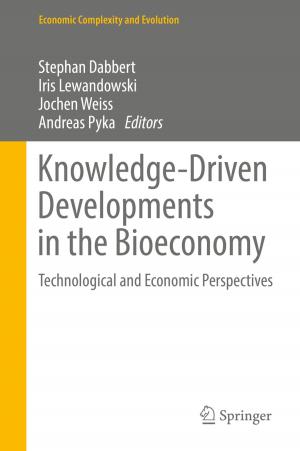Counterfeiting and Piracy
A Comprehensive Literature Review
Nonfiction, Reference & Language, Law, Media & the Law, Commercial, Business & Finance| Author: | Ludovica Cesareo | ISBN: | 9783319253572 |
| Publisher: | Springer International Publishing | Publication: | November 6, 2015 |
| Imprint: | Springer | Language: | English |
| Author: | Ludovica Cesareo |
| ISBN: | 9783319253572 |
| Publisher: | Springer International Publishing |
| Publication: | November 6, 2015 |
| Imprint: | Springer |
| Language: | English |
This book aims to identify, analyze, and systematize the available research on counterfeiting and piracy published over a thirty-five year time span (1980–2015) in order to highlight the main trends in the illicit trade literature, propose suggestions for managers battling against illicit trade, and provide a starting point for future research. Counterfeiting and piracy, i.e., the violation of intellectual property rights (IPRs), including trademarks, copyright, and patents, have been investigated across a multitude of fields, from ethics to marketing, from law to business, from criminology to psychology. While the number of contributions has been substantial, research on both demand and supply has been fragmented and has at times yielded contradictory results. In addition, the lack of an extensive, interdisciplinary, and up-to-date literature review has made it hard to fully understand what aspects of the phenomenon need further clarification in order to stem consumer demand and provide meaningful suggestions to companies combatting illicit trade daily. A systematization of the existing literature is absolutely paramount and this need is fully met by this book.
This book aims to identify, analyze, and systematize the available research on counterfeiting and piracy published over a thirty-five year time span (1980–2015) in order to highlight the main trends in the illicit trade literature, propose suggestions for managers battling against illicit trade, and provide a starting point for future research. Counterfeiting and piracy, i.e., the violation of intellectual property rights (IPRs), including trademarks, copyright, and patents, have been investigated across a multitude of fields, from ethics to marketing, from law to business, from criminology to psychology. While the number of contributions has been substantial, research on both demand and supply has been fragmented and has at times yielded contradictory results. In addition, the lack of an extensive, interdisciplinary, and up-to-date literature review has made it hard to fully understand what aspects of the phenomenon need further clarification in order to stem consumer demand and provide meaningful suggestions to companies combatting illicit trade daily. A systematization of the existing literature is absolutely paramount and this need is fully met by this book.















